Contents
The world is rapidly shifting towards digitization, and with it, the way we recognize skills and achievements is evolving. Digital credentials are at the forefront of this revolution, providing a more efficient and secure method for individuals and organizations to showcase accomplishments, skills, and competencies. In this comprehensive guide, we will explore the concept of digital credentials, their benefits, examples, and how they shape professional development’s future.
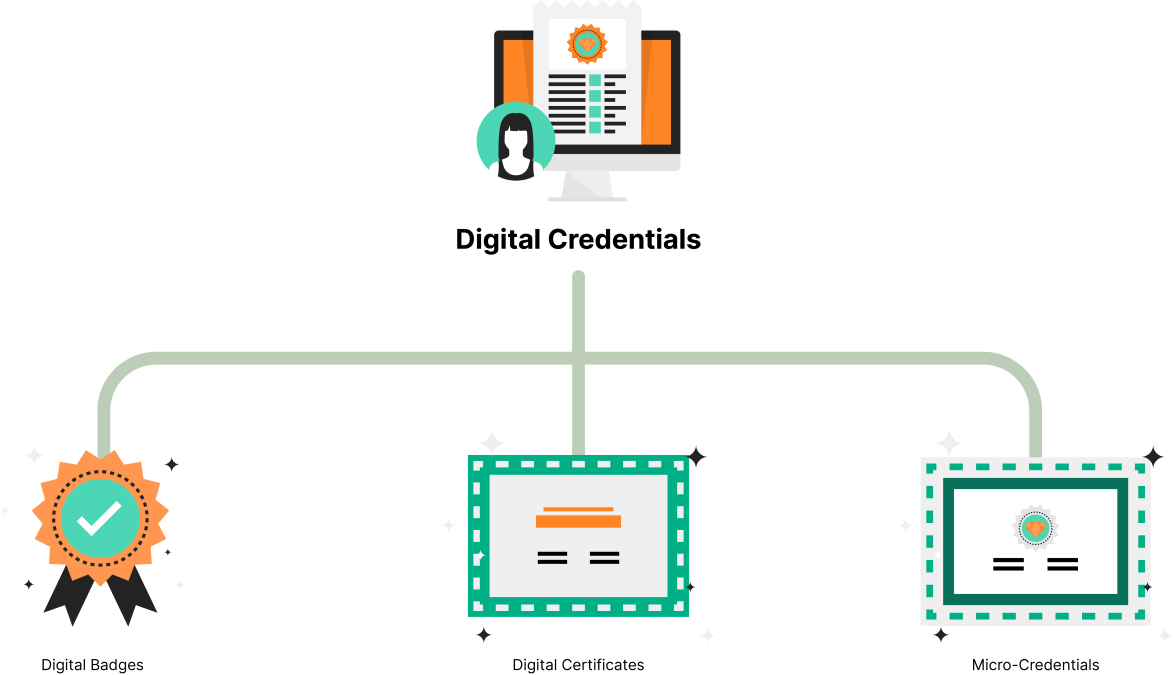
As the global workforce becomes increasingly digital, credentials are poised to play a significant role in the future of education and professional development. Digital credentials are electronic versions of traditional certifications, licenses, badges, and diplomas that verify an individual’s achievements or skills. These credentials are stored, shared, and accessed online, making them more convenient and accessible than their physical counterparts.
Types of Digital Credentials
In today’s digital age, traditional paper certificates are giving way to more flexible and secure forms of accreditation: Digital credentials. These digital representations of achievement or qualifications come in various forms, each serving specific purposes and providing its benefits. Let’s explore the diverse world of digital credentials, from digital badges and certificates to micro-credentials, stacked credentials, and blockchain credentials.
Digital Badges: Acknowledge Short-term Achievements

Digital badges are a modern approach to recognizing achievements, designed for credentials that can be achieved relatively quickly. These may include completing individual modules of a more complex training or attending a conference. Digital badges use shapes, colors, and symbols to indicate achievement levels, making them visually appealing and easy to understand.
One notable feature of digital badges is their versatility across different platforms. They can be seamlessly integrated into various online spaces, allowing recipients to showcase their achievements on websites, social media profiles, and more. Digital badges can represent different achievements, making them versatile for recognizing small and important achievements. While some organizations only use digital badges, others combine them with digital certificates to create a complete credential ecosystem.
Digital Certificates: The Development of Formal Qualifications

Digital certificates are digital copies of traditional paper certificates, awarded for achievements requiring more time commitment. Examples include earning a degree online, joining a professional association, or completing an entire training program.
Digital certificates go beyond a simple graphical representation by including additional information such as work samples, transcripts, test results, or references. These certificates provide a bridge between the digital and physical domains. While they eliminate the need for physical copies, they can still be printed and verified on paper using a scannable QR code. This ensures the digital certificate remains reliable and easy to use in different contexts.
Institutions and educational institutions use digital certificates to demonstrate various achievements, from completing learning pathways to acquiring new skills. This digital format improves accessibility and ease of verification while preserving the appearance of a traditional certificate.
Micro-Credentials: Bite-Sized Knowledge and Skill Building

Micro-credentials are a transformative approach to learning and skill enhancement. These bite-sized awards target succinct courses, individual modules, webinars, and events, providing an agile and modular learning experience. Micro-credentials are tailored to learners seeking precise knowledge acquisition within a condensed timeframe.
The allure of micro-credentials lies in their accessibility and relevance. Learners can pinpoint specific areas of interest or skill gaps, rendering them an optimal choice for professionals aiming to refine their expertise. As learners accumulate an array of micro-credentials, they fashion a personalized portfolio that mirrors their competencies and continuous growth.
Stackable Credentials: Develop Skills Over Time
Stacked credentials provide a structured framework for gradually accumulating knowledge and skills. These degrees combine personal achievement over time, allowing learners to create a cohesive and comprehensive skill set. Stacked credentials allow learners to tailor the learning journey to their unique needs.
Organizations use stacked micro-certificates to drive student progress and provide a clear record of their achievements. Learners can pursue stacked degrees independently or as part of a larger learning path. This format clarifies acquired skills and allows learners to showcase their growing expertise.
Blockchain Credentials: Improved Security and Verification
At a time when data security is paramount, blockchain credentials offer an innovative solution. These digital logins leverage blockchain technology, ensuring the highest level of security and verification. Unlike traditional certificates, blockchain credentials are nearly impossible to forge, modify or delete. Blockchain credentials are stored on the blockchain, providing an immutable and falsifiable record of achievements. This enhanced security is achieved without storing personal data on the blockchain, preserving privacy while providing reliable authentication.
What are Verifiable Digital Credentials?

Verifiable digital credentials can be independently verified by a third party to ensure authenticity. These credentials are secured, allowing employers, educational institutions, and other stakeholders to trust the information presented.
A verifiable digital certificate often contains metadata about the issuing organization, the recipient, the achievement, and a unique identifier that allows easy verification. This additional layer of security helps prevent fraud and misrepresentation of skills and achievements, making digital credentials even more valuable in the professional landscape.
Verifiable credentials are revolutionizing how skills and achievements are recognized and validated. By leveraging cutting-edge technologies and advanced security measures, these credentials build trust and confidence in the digital credential ecosystem, benefiting individuals and organizations. One significant advantage of verifiable digital credentials is their ability to streamline the hiring and admissions process. Employers and educational institutions can quickly verify an applicant’s credentials, reducing the time spent on manual verification and background checks. This efficiency allows organizations to make better-informed decisions. It helps individuals stand out in competitive job markets or application pools.
Another aspect of verifiable digital credentials is their potential to enhance collaboration among stakeholders, such as industry leaders, academic institutions, and credentialing bodies. By adopting them, these stakeholders can work together to develop a shared understanding of the skills and competencies required in various fields, ensuring that learning experiences align with industry needs. This collaborative approach can lead to more relevant and valuable educational offerings, ultimately benefitting both learners and employers.
Furthermore, verifiable digital credentials can empower individuals to take ownership of their professional development. By providing a secure and trustworthy way to showcase skills and achievements, these credentials enable learners to curate their digital portfolios and engage in lifelong learning. This increased control and transparency can help individuals navigate the ever-changing job market, equipping them with the tools to succeed in a dynamic and competitive landscape.
In conclusion, verifiable credentials transform how skills and achievements are recognized, validated, and trusted. By providing a secure and reliable means of showcasing expertise, these credentials pave the way for a more efficient, collaborative, and learner-centred professional ecosystem. As technology advances and the need for skills verification grows, verifiable credentials will play an increasingly important role in shaping the future of education and professional development.
How to Protect Digital Credentials from Being Forged?
As digital credentials gain popularity, ensuring their security and preventing forgery is crucial. Here are some strategies to protect digital credentials:
Secure Digital Credentialing Platforms: Choosing a reputable and secure digital credentialing platform is essential for safeguarding credentials. These platforms should use advanced encryption techniques and robust security measures to protect their data.
Blockchain Technology: By leveraging blockchain technology, digital credential can be stored in a decentralized, tamper-proof ledger. This ensures the integrity and authenticity of the credential and makes it nearly impossible to forge.
Digital Signatures: Issuers of credentials can sign them using digital signatures. This cryptographic technique verifies the issuer’s authenticity and the credential’s integrity. Recipients and verifiers can then use the issuer’s public key to confirm that the digital credential has not been tampered with or forged.
Regular Monitoring: Individuals and organizations should monitor their credentials to ensure they remain accurate and up-to-date. This can help identify any discrepancies or potential security breaches.
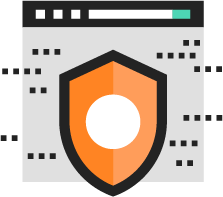
Benefits of Digital Credentials for Organizations
Organizations must continually adapt to stay competitive and attract top talent in the ever-evolving professional landscape. One way to achieve this is by embracing digital credentials, which offer a myriad of benefits for both employers and employees. This section will explore the advantages credentials can bring to organizations, including streamlined recruitment, improved talent management, enhanced brand reputation, and increased collaboration.
Streamlined Recruitment: Digital credential make it easier for organizations to assess and verify the skills and qualifications of potential candidates, simplifying the hiring process. By having access to verified digital credentials, employers can quickly identify suitable candidates, reducing the time and resources spent on recruitment.
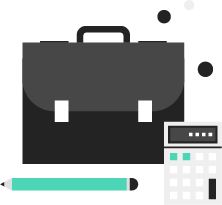
Improved Talent Management: Digital credentialing allows organizations to track employees’ professional development and better match them with suitable roles and projects. This can improve employee engagement, retention, and productivity. Employees are more likely to be satisfied in positions that align with their skills and interests.
Enhanced Brand Reputation: By adopting digital credentials, organizations demonstrate a commitment to innovation, transparency, and continuous learning. This can attract top talent and position the organization as a leader in its industry.

Increased Collaboration: Digital credentials platforms enable organizations to share information about their employees’ skills and achievements with other organizations, fostering collaboration and knowledge-sharing across industries.
As the professional landscape continues to evolve, the adoption of digital credentials will become increasingly important for organizations looking to stay competitive and attract the best talent. They offer a range of benefits for organizations, from streamlining recruitment processes to improving talent management and fostering collaboration. By embracing this innovative approach to skill validation and professional development, organizations can position themselves at the forefront of their industry and create a more efficient, effective, and engaged workforce.
Use Cases of Digital Credentials
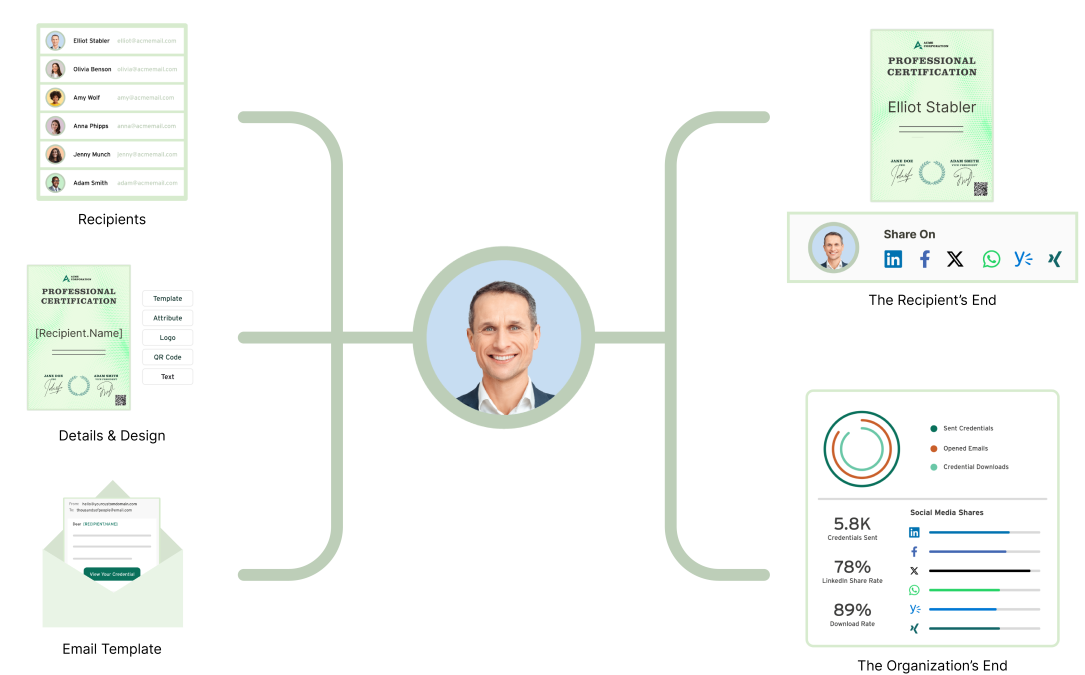
Higher Education Institutions – Graduation Certificates: A university issues digital certificates to its graduating students. These credentials showcase the students’ degree completion, academic achievements, and other relevant details, allowing them to share their accomplishments with prospective employers easily.
Professional Associations – Continuing Education Badges: A medical association awards digital badges to healthcare professionals who complete specialized training courses. These badges demonstrate their ongoing commitment to staying updated with the latest medical advancements.
Corporate Training Providers – Skill-Based Micro-Credentials: A corporate training provider offers micro-credentials to employees who complete short skill-specific courses, such as leadership workshops or project management seminars. These digital badges enable employees to showcase their evolving skills within and outside the organization.
Freelancers – Portfolio Enhancement: A graphic designer earns digital badges for mastering different design software and techniques. These badges are displayed on the freelancer’s portfolio website, providing potential clients with tangible evidence of their skills.
Online Learning Platforms – Language Proficiency Certificates: An e-learning platform issues digital certificates for language learners with certain proficiency levels. These credentials can be shared on social media, helping learners demonstrate their language skills to friends and potential employers.
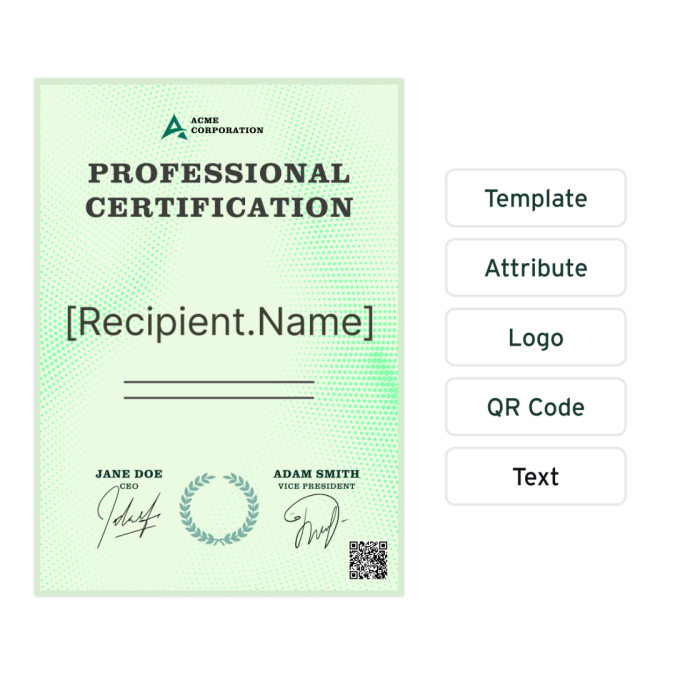
Non-Profit Organizations – Volunteer Recognition: A conservation nonprofit offers digital badges to volunteers participating in environmental cleanup events. Volunteers proudly display these badges on their social media profiles, spreading awareness and encouraging others to get involved.
Professional Trainers – Workshop Completion Badges: A leadership coach conducts workshops for managers. After each workshop, attendees receive digital badges representing the skills they’ve acquired. These badges enhance the attendees’ professional profiles and remind them of their growth.
Job Seekers – Skills Showcase: A recent college graduate earns digital certificates for relevant online courses, coding boot camps, and internships. These credentials, displayed on the graduate’s resume, provide evidence of practical skills and a proactive attitude toward professional development.
Educational Consultants – Customized Learning Pathways: An educational consultant designs personalized learning pathways for K-12 students. Students completing various educational modules receive digital badges that signify their progress and achievements, motivating them to explore further.
These diverse use cases illustrate the broad spectrum of applications for digital credentials, spanning education, professional development, recognition, skills validation, and beyond. As the digital credentials landscape continues to expand, they become invaluable tools for various stakeholders in showcasing accomplishments and driving growth.
Benefits of Digital Credentials for Individuals
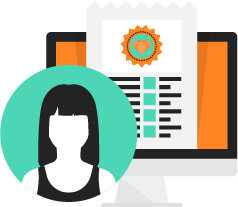
In the competitive job market, individuals must find ways to stand out and showcase their skills and achievements. They offer a modern and effective solution, providing numerous benefits for individuals regarding visibility, continuous learning, security, and faster verification. This section will explore these advantages in greater detail, highlighting the value of digital credentials for professionals in various fields.
Increased Visibility: Digital credentials can be easily shared on professional networking platforms, increasing an individual’s exposure to potential employers and collaborators. Showcasing them on platforms like LinkedIn can help individuals stand out from their peers and attract new opportunities.
Lifelong Learning: They encourage continuous learning and skill development, ensuring that individuals stay relevant in the rapidly changing job market. This focus on lifelong learning can lead to better job prospects and increased earning potential.
Secure and Portable: Digital credentials are less susceptible to lose or damage and can be accessed anytime, anywhere. Individuals can avoid misplacing or damaging their physical certificates, as their credentials can be easily retrieved and shared.

Faster Verification: Digital credentials can be quickly verified by employers, educational institutions, and other stakeholders, reducing the time it takes for individuals to prove their qualifications and skills.
As the professional landscape continues to evolve and digital technology becomes more prevalent, adopting them will play a vital role in helping individuals stand out and succeed in their careers. Embracing digital credentials can significantly benefit individuals by enhancing their visibility, promoting lifelong learning, providing secure and portable access to their achievements, and speeding up the verification process. By leveraging digital credential, professionals can better navigate the competitive job market and maximize their potential for growth and success.
Popular Digital Credential Platforms
Several digital credentials platforms are available, each with unique features and benefits. Some popular credential venues include:

Sertifier: Sertifier is a digital credentials management platform that enables organizations to design, issue, and manage digital certificates and badges. The platform includes features such as customizable templates, secure credential storage, and analytics to help organizations measure the success of their credentialing programs. Sertifier also offers seamless integration with various learning management systems, simplifying the process of issuing credentials to learners.
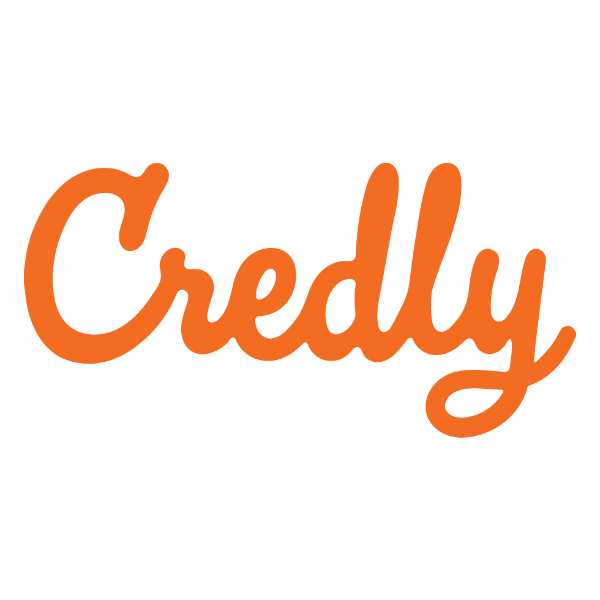
Credly: Credly offers a platform for issuing, managing, and verifying digital badges. Their platform, called Acclaim, enables organizations to create custom digital badges and credentials and provides analytics to track the impact of their credentialing programs.

Accredible: Accredible is another digital credentialing solution that allows organizations to create, issue, and manage digital certificates and badges. Their platform also integrates with popular learning management systems (LMS) and supports secure verification of credentials.

Certifier: Certifier is a digital credentialing platform designed for simplicity and ease of use. The platform allows organizations to create custom digital credentials and provides tools for managing and verifying them.

CertifyMe: CertifyMe offers another digital credentialing platform for creating, issuing, and managing digital certificates and badges.
These platforms, including Sertifier, Credly, Accredible, Certifier, and CertifyMe, provide organizations with the tools and resources to implement and manage digital credentialing programs effectively. By leveraging these platforms, organizations can reap the numerous benefits of digital credentials, including streamlined recruitment, improved talent management, enhanced brand reputation, and increased collaboration.
The Role of Digital Credentials in the Future of Professional Development
Digital credentialing offers numerous benefits to both individuals and organizations, making it an essential component of the modern professional landscape. By embracing them, we can create a more efficient, secure, and transparent ecosystem for recognizing and showcasing skills and achievements, ultimately driving innovation and growth in the global workforce.
In the future, digitalized credentials are poised to play a significant role in several aspects of professional development:
Personalized Learning Paths: As digital credentials become more prevalent, they can facilitate the creation of customized learning paths for individuals. These tailored pathways will help individuals identify and pursue relevant skills and competencies, ensuring they remain competitive in the job market. By aligning learning experiences with specific career goals, they can help individuals maximize their professional development.

Real-time Skill Validation: They can provide real-time validation of skills and competencies, allowing individuals to demonstrate their expertise immediately upon completion of a learning experience. This real-time validation can help bridge the gap between learning and employment, ensuring that individuals can quickly apply their newly acquired skills in the workplace.

Enhanced Collaboration between Industry and Academia: They can facilitate more robust collaboration between industry and academia by providing a common language for discussing and validating skills and competencies. This collaboration can lead to developing industry-aligned learning experiences, ensuring that educational institutions produce graduates with the skills and knowledge required by the workforce.
Global Recognition and Mobility: As digital credentials gain wider acceptance across borders, they can enable individuals to showcase their skills and achievements worldwide. This can facilitate greater mobility and opportunities for individuals to work and learn in different countries, driving innovation and growth in the global workforce.
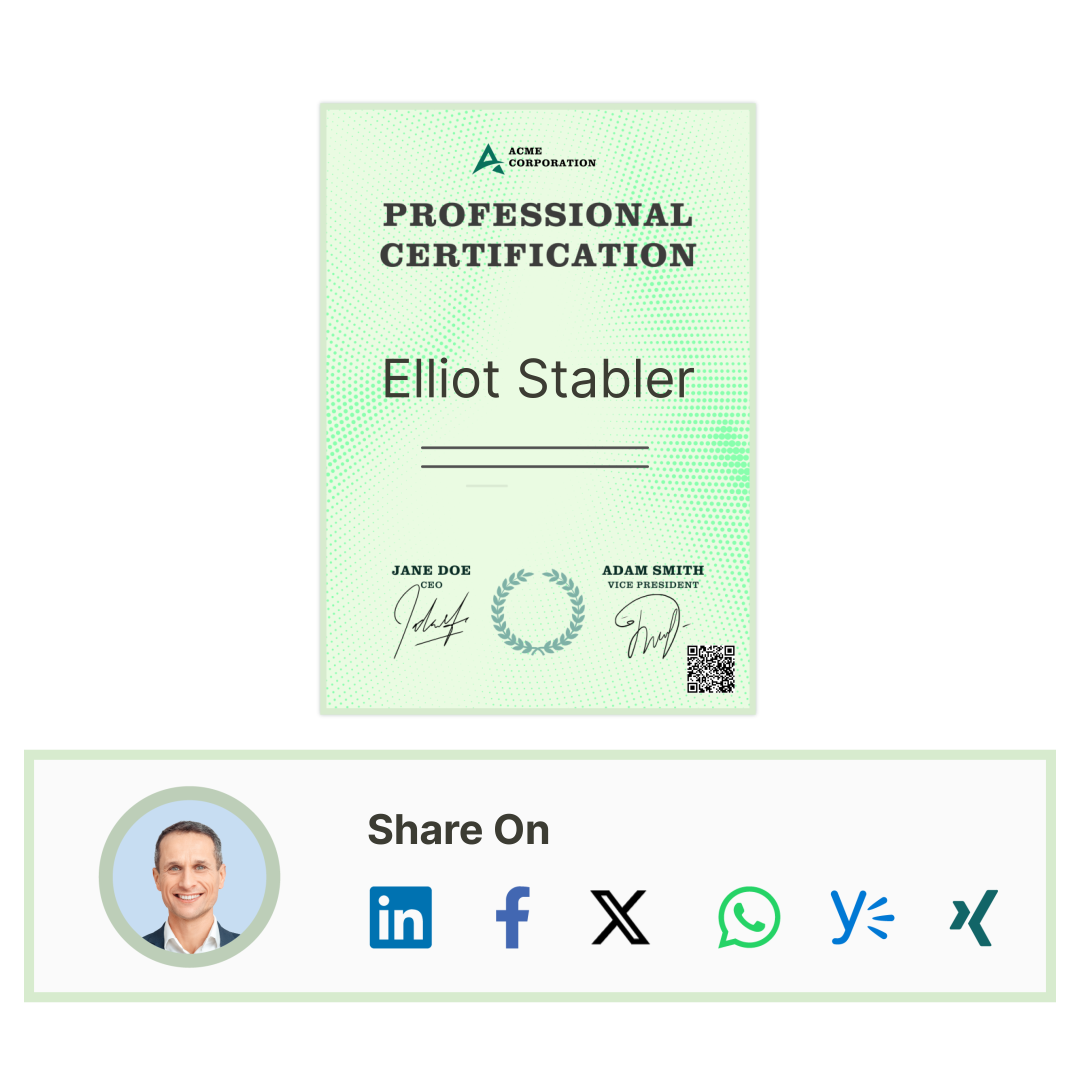
Lifelong Learning and Upskilling: The rapid pace of technological advancements and the constantly changing job market will make lifelong learning and upskilling essential for individuals to remain competitive. Digital credentials will play a crucial role in encouraging and tracking ongoing education, providing individuals with a clear roadmap for their professional development.
New Credentialing Ecosystems: As digital credentials become more widely adopted, we can expect to see the development of new credentialing ecosystems, including industry-specific credentialing bodies and cross-industry partnerships. These ecosystems will help standardize them and facilitate their recognition and transferability across various sectors.
In conclusion, the rise of digital credentials will significantly impact the future of professional development. These electronic representations of skills and achievements will pave the way for more efficient, secure, and transparent recognition of competencies. By embracing them, individuals and organizations can stay ahead in the ever-changing job market, fostering innovation and growth in the global workforce.
Overcoming Challenges of Digital Credentials
Despite the many advantages of digital credentials, addressing specific challenges is essential for their widespread adoption.
- Standardization:
One of the challenges is the standardization of digital credentials. As more organizations and institutions adopt credentials, there is a need for standardized frameworks and guidelines to ensure consistency and interoperability. This will help streamline the process of issuing, managing, and verifying them across different platforms and industries. Efforts should be made to develop and promote industry-wide standards, which can foster greater collaboration and trust among stakeholders. Industry associations, educational institutions, and credentialing organizations must come together to establish consensus on best practices, common data formats, and credential validation methods. This collaborative approach can help create a cohesive ecosystem for digital credentials, ensuring their long-term success.

- Awareness:
Another challenge is raising awareness and acceptance of digital credentials. Many individuals and organizations still need to become familiar with credentials or may be hesitant to adopt them due to concerns about their validity or security. To encourage their adoption, educating people about their benefits and demonstrating their reliability and security is crucial. This can be achieved through various means, such as marketing campaigns, case studies, and testimonials from early adopters. Additionally, organizations that successfully implement digital credentialing programs should share their experiences and insights to help dispel misconceptions and build trust in credentials.
- Integrations:
Integration with existing systems is also a challenge. To maximize the potential of digital credentials, they need to be seamlessly integrated with existing systems, such as learning management systems, human resources platforms, and professional networking sites. This will help ensure a smooth transition to digital credentialing and improve the user experience for both individuals and organizations. Collaboration between digital credential platform providers and existing system providers can help facilitate this integration and ensure compatibility. Furthermore, the development of application programming interfaces (APIs) and other integration tools can enable a more seamless exchange of data between systems, reducing friction and promoting widespread adoption of digital credentials.

- Legal Framework:
Lastly, legal and regulatory frameworks play a significant role in the adoption of digital credentials. The adoption of credentials may require changes to existing legal and regulatory frameworks, particularly in industries where traditional certifications and licenses are heavily regulated. Policymakers and stakeholders must work together to develop appropriate regulations that support the growth of digital credentials while maintaining the necessary standards and protections. This collaboration can help create a more conducive environment for the widespread adoption of credentials.
In some cases, existing regulations may not adequately address the unique characteristics of digital credentials, leading to uncertainty and potential roadblocks to adoption. For example, some jurisdictions may require physical certificates for certain professions or have specific rules regarding the storage and handling of personal data. To overcome these challenges, it is essential for stakeholders to engage in dialogue with regulators and policymakers, highlighting the advantages of them and advocating for the modernization of legal and regulatory frameworks.
- Privacy & Data Protection:
Additionally, privacy and data protection concerns are crucial aspects to consider in the adoption of digital credentials. As digital credentials often contain sensitive personal information, it is essential to ensure that they are stored and transmitted securely and that individuals have control over who can access their data. Digital credential platforms must adhere to robust security standards and comply with data protection regulations such as the General Data Protection Regulation (GDPR). This will help build trust among users and promote the adoption of digital credentials.
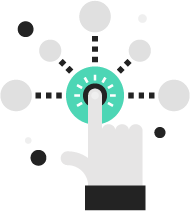
Furthermore, addressing the digital divide is another challenge to consider. While digital credentials offer many benefits, their potential impact could be limited if a significant portion of the population lacks access to digital technology or the necessary skills to use it effectively. Ensuring that digital credentials are accessible to a wide range of individuals, regardless of their background or technical abilities, is crucial for promoting equity and inclusivity in the professional landscape. This may involve developing user-friendly platforms, providing training and support, and investing in digital infrastructure to increase connectivity in underserved areas.
By addressing these challenges and continuing to promote the benefits of digital credentials, we can pave the way for a more connected, efficient, and secure professional landscape. This involves fostering cross-sector collaboration, investing in research and development, and supporting initiatives that raise awareness and acceptance of them. As the global workforce evolves and adapts to the digital age, digital credential will play a pivotal role in shaping the future of education, professional development, and talent management.
It is also essential to keep an eye on emerging technologies and trends that could further enhance the value of digital credentials. For example, advancements in artificial intelligence and machine learning could enable more sophisticated analysis of skills and achievements, helping organizations and individuals make better-informed decisions about professional development opportunities. Similarly, improvements in digital identity solutions could lead to even more secure and privacy-preserving digital credential platforms, increasing user trust and adoption.
In conclusion, addressing the challenges associated with digital credentials is a crucial step in ensuring their widespread adoption and maximizing their impact on the future of professional development. By working together, stakeholders from various sectors can create a more efficient, secure, and transparent ecosystem for recognizing and showcasing skills and achievements. Ultimately, this will drive innovation and growth in the global workforce, benefiting individuals, organizations, and society as a whole.
Preparing for the Future with Digital Credentials

As digital credentials become more prevalent, it is essential for individuals and organizations to stay ahead of the curve and embrace the opportunities they provide. The following steps can help you prepare for the future of a digital credential:
Stay Informed: Keep up-to-date with the latest developments in digital credentialing, including new platforms, technologies, and best practices. Subscribe to industry newsletters, follow thought leaders on social media, and attend relevant conferences and webinars. Staying informed will help you make educated decisions about adopting digital credentials and maximizing their potential.
Develop a Digital Credentialing Strategy: Whether you are an individual looking to showcase your skills or an organization seeking to implement digital credentials, it’s essential to have a clear strategy in place. Consider your goals, target audience, and the types of digital credentials you want to issue or pursue. Evaluate how they align with your overall professional development or talent management strategy, and identify potential opportunities for leveraging them to enhance your career or organizational objectives.
Choose the Right Platform: Select a digital credentialing platform that aligns with your needs and goals. Research various platforms and compare their features, benefits, and pricing models. Consider factors such as security, user experience, and integration with existing systems when evaluating different platforms. Seek recommendations from peers or industry experts to help you identify a platform that best suits your requirements.
Promote Digital Credentialing: Encourage the adoption of digital credentials within your network by sharing information about their benefits and showcasing your own credential. Publish articles, blog posts, or social media updates discussing the value of them and share your experiences with implementing or using them. This will help build awareness and acceptance of digital credential across various sectors.

Invest in Digital Skills Development: As the importance of digital credentials grows, so does the need for individuals and organizations to develop digital skills. Invest in training and education programs that equip you or your employees with the necessary skills to navigate the digital landscape effectively. This will help ensure that you are well-prepared to leverage digital credentials to their full potential and stay competitive in the evolving job market.
Establish Partnerships: Collaborate with other organizations, educational institutions, and industry associations to promote the adoption of digital credentials and develop shared standards and best practices. Building strong partnerships can help create a more connected and supportive ecosystem for digital credentialing, fostering innovation and growth.
Monitor Success Metrics: To gauge the effectiveness of your digital credentialing initiatives, it is essential to track key success metrics, such as the number of credentials issued, the rate of adoption, and the impact on recruitment, employee engagement, or professional development. Analyzing these metrics can help you identify areas for improvement and refine your digital credentialing strategy.
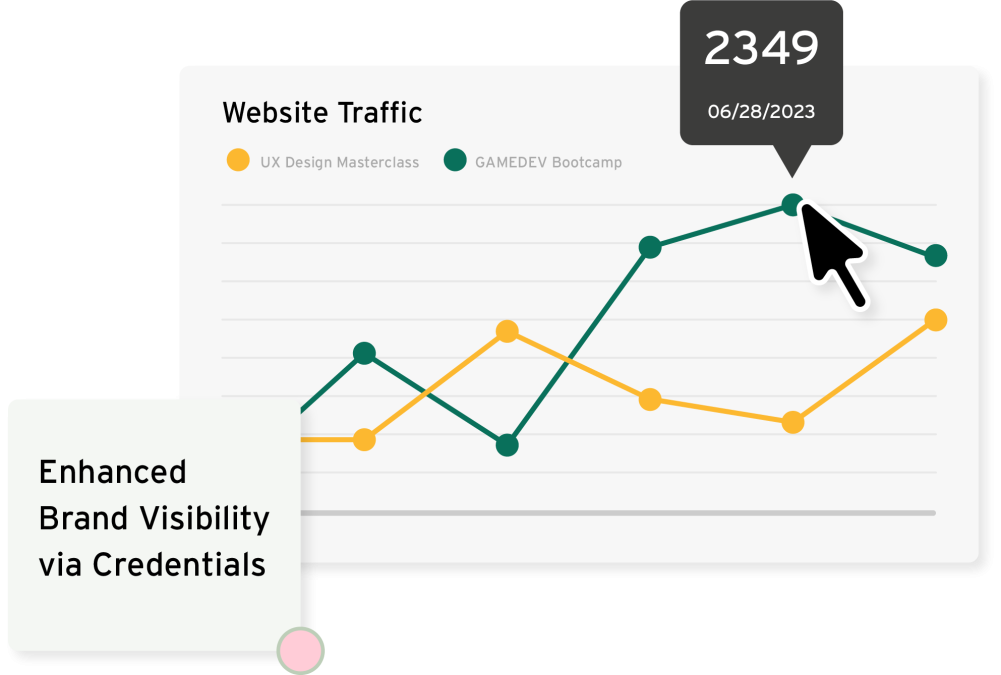
Ensure Compliance with Regulations: As you adopt them, it is crucial to stay up-to-date with relevant legal and regulatory requirements, such as data protection and privacy regulations. Ensure that your digital credentialing practices are compliant with applicable laws and industry standards to minimize potential risks and maintain the trust of stakeholders.
By taking these steps to prepare for the future of digital credential, you can position yourself or your organization at the forefront of the digital transformation in professional development. Embracing digital credentials not only offers significant benefits in terms of efficiency, security, and accessibility but also demonstrates a commitment to innovation, continuous learning, and industry leadership.
Conclusion
Digital credentials are revolutionizing the landscape of skill recognition and validation, offering substantial benefits for individuals and organizations. By streamlining the process of verifying qualifications, they allow for improved recruitment, talent management, and collaboration. As we embrace this transformation, we create a more connected, efficient, and secure ecosystem for learning and growth, driving innovation across industries.
The future of digital credentials is one of continuous evolution, shaped by technological advancements, increased adoption, and collaborative efforts to address challenges such as standardization, integration, and awareness. By staying informed, developing a robust digital credentialing strategy, and promoting the value of them, individuals and organizations can ensure they are well-prepared to navigate the changing professional landscape and capitalize on the opportunities presented by digital credentialing.
In conclusion, the rise of digital credentials signifies a significant shift in how we recognize and validate skills and achievements. By embracing their potential, we can collectively build a more efficient, secure, and transparent professional environment, benefiting not only individuals and organizations but also contributing to the overall progress of our global workforce.
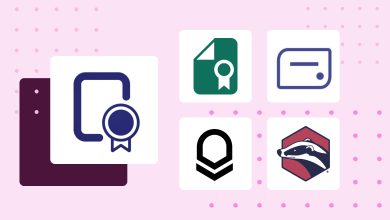



This article was incredibly insightful and informative. As someone who is in the process of job hunting, I found the section on smart certificates and digital badges particularly interesting. It’s great to know that there are ways to verify my skills and achievements that are more reliable and secure than traditional paper certificates. Highly recommended read!
I found this blog post on digital credentials very informative and timely. As someone who has had to deal with traditional paper-based certificates and credentials in the past, I can appreciate the benefits of digital credentials. The author does an excellent job of explaining the advantages of digital credentials over traditional credentials, such as reduced costs, increased reliability, and ease of sharing. I also appreciated the section on smart certificates and digital badges, which I think are exciting innovations that can benefit both individuals and organizations. Overall, I highly recommend this blog post to anyone interested in learning more about digital credentials.
As an HR professional, I found this article to be extremely relevant to my work. Digital credentials are becoming increasingly popular in the recruitment process, and it’s important for me to understand how they work and how to verify them. The section on smart certificates was particularly helpful, and I will definitely be considering them as a way to evaluate candidates in the future.
I was not familiar with the concept of digital badges before reading this article, but I’m now fascinated by them. It’s amazing how much information they can contain, and how they can be used to demonstrate a wide range of skills and achievements. I also appreciated the section on the benefits of digital credentials, such as reduced costs and time-saving. Overall, a great read!
I have been hearing more and more about digital credentials lately, so I was glad to come across this article. The author does an excellent job of explaining the difference between digital and traditional credentials, and the advantages of using digital ones. I also appreciated the FAQ section, which answered some of the questions I had about how digital credentials work. Highly recommend this article to anyone interested in the topic!
Digital credentials have a big difference on today’s education system. Thank you for your information-rich content.
I found this blog while searching for Certifier alternatives, I think I am going to benefit from your credentialing services.
Verifiable digital credentials add so much value to my business as an online course creator. I will contact with you as soon as possible.
I was not aware of the benefits of digital credentials until I read your blog. Good job Barıs!